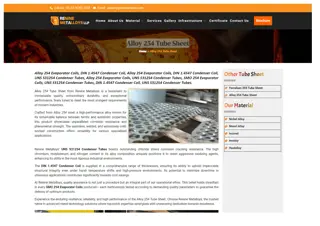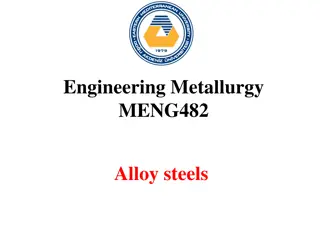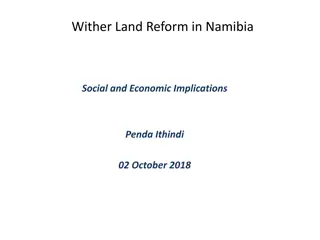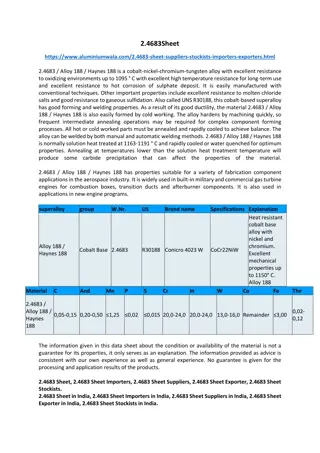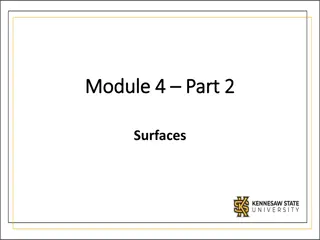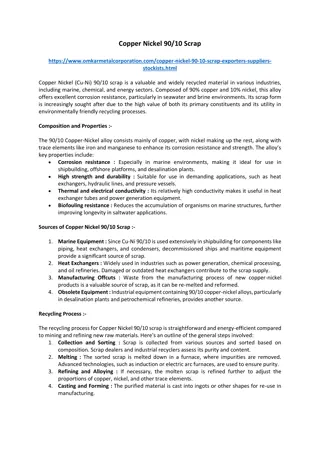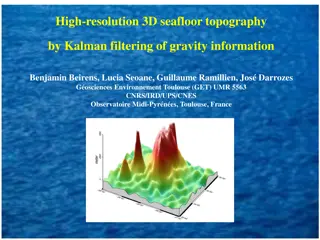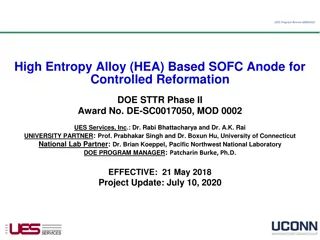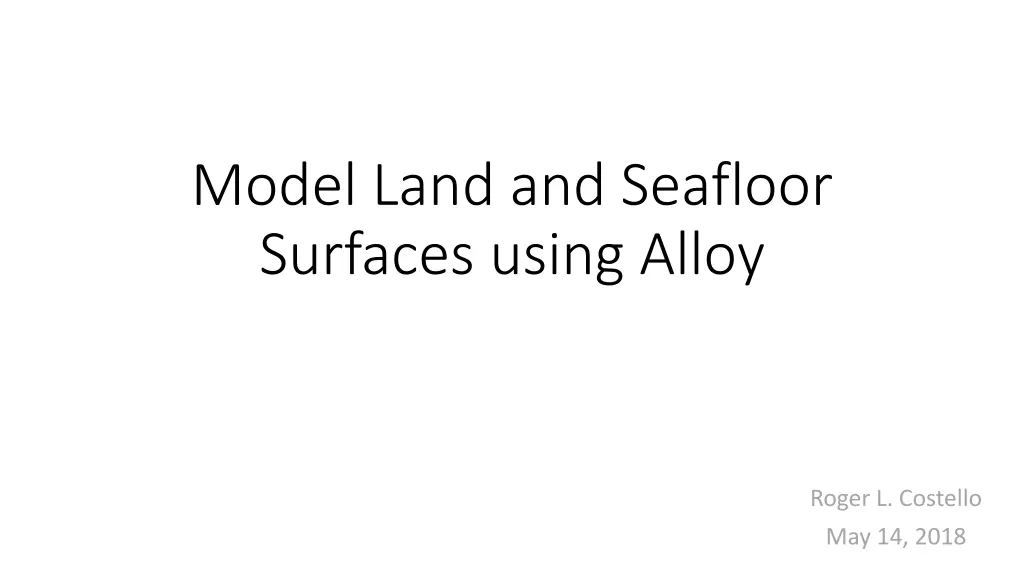
Modeling Land and Seafloor Surfaces using Alloy
Learn how to discretize continuous surfaces, decompose land and seafloor surfaces into triangles, and apply Finite Element Analysis to represent mesh topology in the context of modeling land and seafloor surfaces using Alloy.
Download Presentation

Please find below an Image/Link to download the presentation.
The content on the website is provided AS IS for your information and personal use only. It may not be sold, licensed, or shared on other websites without obtaining consent from the author. If you encounter any issues during the download, it is possible that the publisher has removed the file from their server.
You are allowed to download the files provided on this website for personal or commercial use, subject to the condition that they are used lawfully. All files are the property of their respective owners.
The content on the website is provided AS IS for your information and personal use only. It may not be sold, licensed, or shared on other websites without obtaining consent from the author.
E N D
Presentation Transcript
Model Land and Seafloor Surfaces using Alloy Roger L. Costello May 14, 2018
The material in these slides come from this paper http://www4.ncsu.edu/~jwb/papers/baugh-scp-2018.pdf
How to model continuous surfaces? The subject matter of scientific programs often concerns the physical processes that surround us, where space and time are traditionally viewed as being continuous.
Discretize the continuous surface Discretize time and space. Decompose land and seafloor surfaces into triangles. The land and seafloor surfaces are represented as a collection of contiguous, non-overlapping triangles. The resulting mesh of triangles and vertices can be thought of as a triangulation of a surface, with every vertice located in a 3-D space. While spatial attributes and physical quantities are important, we separate concerns here and begin with a representation of mesh topology alone with triangles and vertices as basic components that can later be embellished with other attributes.
Finite Element Analysis Finite Element Analysis is a field of study in which you take a continuous thing and decide how to decompose it into a collection of things. To solve the problem, it [Finite Element Analysis] subdivides a large problem into smaller, simpler parts that are called finite elements. The simple equations that model these finite elements are then assembled into a larger system of equations that models the entire problem. [Wikipedia]
We want the Alloy model to produce instances like this Obviously, the Alloy Analyzer won t generate a graphic that looks like this. This is a meaningful interpretation of the instance (i.e., a meaningful interpretation of the sets that the Alloy Analyzer generates). The red lines show adjacent triangles.
This is called a mesh Triangle mesh: a set of triangles that are connected by their common edges or corners.
We want a set of meshes sig Mesh { }
Each mesh has a set of triangles sig Mesh { triangles: some Triangle }
sig Mesh { triangles: some Triangle } sig Triangle { }
For each mesh, record which triangles are adjacent sig Mesh { triangles: some Triangle, adj: Triangle -> Triangle } sig Triangle { }
Each triangle has edges, represented by pairs of vertices sig Mesh { triangles: some Triangle, adj: Triangle -> Triangle } sig Triangle { edges: Vertex -> Vertex }
sig Mesh { triangles: some Triangle, adj: Triangle -> Triangle } sig Triangle { edges: Vertex -> Vertex } sig Vertex {}
Mesh m m.triangles edges v2 t0 t0 v0 v1 t1 t0 v2 v0 t2 t0 t1 v1 v2 v3 m.adj t1 v3 v1 t0 t1 t1 v1 v2 t1 t0 v4 t2 v2 t1 t2 t2 t1 v3 t2 v4 v2 t2 v3 sig Mesh { triangles: some Triangle, adj: Triangle -> Triangle } sig Triangle { edges: Vertex -> Vertex } sig Vertex {}
A brief detour The next step is to identify constraints on the signatures. Prior to that, however, let s play with the signatures and see how to navigate through them using Alloy expressions.
What triangles is triangle t adjacent to? t.(m.adj) m.adj t t0 t1 t0 t1 t2 t1 t0 t1 t2 t2 t1 Mesh m
Are triangles t and t adjacent? t in m.adj[t ] m.adj t' true t0 t1 t1 t1 t0 t t0 t1 t2 t2 t1 Mesh m
What vertex follows vertex v in triangle t? edges v2 t0 v0 t.edges[v] t v1 v1 t0 v2 t0 v0 t0 t1 v1 v2 v v2 v3 t1 v3 v1 Mesh m t1 v1 v2 t2 v2 v4 t2 v4 v3 t2 v3 v2
What vertices can be reached from vertex v in triangle t? edges v2 v2 t0 v0 v.^(t.edges) t v1 v1 t0 v2 t0 v0 v0 t0 t1 v1 v2 v v2 v3 t1 v3 v1 Mesh m t1 v1 v2 t2 v2 v4 t2 v4 v3 t2 v3 v2
What are the vertices in triangle t? edges v0 v2 t0 v0 dom[t.edges] t v2 v1 t0 v2 t0 dom (domain) returns the first column in a binary relation. v1 v0 t0 t1 v1 v2 v3 t1 v3 v1 Mesh m t1 v1 v2 t2 v2 v4 t2 v4 v3 t2 v3 v2
Is triangle t a ring (cyclic)? edges all v: dom[t.edges] | one v.(t.edges) and dom[t.edges] in v.^(t.edges) v2 t0 v0 t v1 t0 v2 t0 true v0 t0 t1 v1 v2 v3 Vertex v in triangle t has exactly one successor vertex and all of t s vertices can be reached from v. Ditto for all vertices in t. t1 v3 v1 Mesh m t1 v1 v2 t2 v2 v4 t2 v4 v3 t2 v3 v2
What are the edges of triangles t? edges v0 v2 v2 t0 v0 t.edges t v2 v1 v1 t0 v2 t0 v1 v0 v0 t0 t1 v1 v2 v3 t1 v3 v1 Mesh m t1 v1 v2 t2 v2 v4 t2 v4 v3 t2 v3 v2
Does triangle t have 3 edges? edges v2 t0 v0 #t.edges = 3 t true v1 t0 v2 t0 v0 t0 t1 v1 v2 v3 t1 v3 v1 Mesh m t1 v1 v2 t2 v2 v4 t2 v4 v3 t2 v3 v2
What edge does triangle t and t have in common? edges v2 t0 v0 ~(t.edges) & t .edges t v2 v1 v1 t0 v2 t0 v0 t0 t1 v1 v2 t' t1 v3 t1 v3 v1 Mesh m t1 v1 v2 t2 v2 v4 t2 v4 v3 t2 v3 v2
Are triangles t and t adjacent? edges v2 t0 v0 t inm.adj[t ] iffone~(t.edges) & t .edges t true v1 t0 v2 t0 v0 t0 t1 v1 v2 t' t1 v3 m.adj t1 v3 v1 t0 t1 Mesh m t1 v1 v2 t1 t0 t2 v2 v4 t1 t2 t2 t1 t2 v4 v3 t2 v3 v2
What are the internal edges? edges sig Mesh { triangles: some Triangle, adj: Triangle -> Triangle } v2 t0 v0 ~(m.triangles.edges) & m.triangles.edges v1 t0 v2 sig Triangle { edges: Vertex -> Vertex } v0 t0 t1 v1 v2 v2 v1 v2 v3 v1 sig Vertex {} t1 v3 v1 v3 v2 Mesh m t1 v1 v2 v2 v3 t2 v2 v4 t2 v4 v3 t2 v3 v2
In the Alloy model to the right, Test.t maps A to B, B to A, and C to A. one sig Test { t: Letter -> Letter } The following expression takes the intersection of Test.t with its transpose: enum Letter { A, B, C } Test.t & ~(Test.t) fact { Test.t = A->B + B->A + C->A } The result is: A->B + B->A run {} Here s why. The expression produces this: {A->B, B->A, C->A} & {B->A, A->B, A->C} Clearly, that yields: {A-B, B->A}
How many undirected edges? Treat these (internal) edges as one each.
How many undirected edges? (cont.) The number of undirected edges is the number of edges minus the result of dividing the number of internal edges by 2.
How many undirected edges? (concluded) Mesh m minus[#m.triangles.edges, div[#(~(m.triangles.edges) & m.triangles.edges), 2]]
Okay, back to building the model We just saw some ways to navigate through the signatures. Now let s see what constraints are needed to have meaningful instances.
Other instances produced by Alloy may satisfy these signatures sig Mesh { triangles: some Triangle, adj: Triangle -> Triangle } sig Triangle { edges: Vertex -> Vertex } sig Vertex {} without having a valid interpretation, so we need to apply constraints.
Constraint 1: Every triangle must have three (directed) edges Triangle t0 must have 3 directed edges
Alloy code for Constraint 1 // Every triangle must have three (directed) edges fact { all t: Triangle | #t.edges = 3 } sig Mesh { triangles: some Triangle, adj: Triangle -> Triangle } sig Triangle { edges: Vertex -> Vertex } sig Vertex {}
Constraint 2: The adjacency relation m.adj is defined over the mesh s set of triangles sig Mesh { triangles: some Triangle, adj: Triangle -> Triangle } These must come from this
Alloy code for Constraint 2 // The adjacency relation m.adj is defined over its // own set of triangles fact { all m: Mesh | dom[m.adj] + ran[m.adj] in m.triangles } dom (domain) returns the first column in a binary relation. ran (range) returns the second column in a binary relation. They are functions (fun), provided by util/relations. sig Mesh { triangles: some Triangle, adj: Triangle -> Triangle } sig Triangle { edges: Vertex -> Vertex } sig Vertex {}
Constraint 3: Each triangles edge set forms a ring Triangle t0 s edges must form a ring
Alloy code for Constraint 3: // Each triangle s edge set forms a ring fact { all t: Triangle | ring[t.edges] } sig Mesh { triangles: some Triangle, adj: Triangle -> Triangle } sig Triangle { edges: Vertex -> Vertex } sig Vertex {}
Alloy code for Constraint 3 (cont.): // Each triangle s edge set forms a ring fact { all t: Triangle | ring[t.edges] } // The term v.e is the set of successors of v, and the // quantifier "one" requires that there be exactly // one such successor v. The term v.^e denotes all // the vertices reachable from v. pred ring [e: Vertex -> Vertex] { all v: dom[e] | one v.e and dom[e] in v.^e } sig Triangle { edges: Vertex -> Vertex } sig Mesh { triangles: some Triangle, adj: Triangle -> Triangle } sig Vertex {}
Constraint 4: No triangle lies on top of another triangle, i.e., each edge is unique
Alloy code for Constraint 4 // No triangle lies on top of another triangle, // i.e., each edge is unique fact { all m: Mesh | alldisj t, t': m.triangles | no t.edges & t'.edges } sig Mesh { triangles: some Triangle, adj: Triangle -> Triangle } sig Triangle { edges: Vertex -> Vertex } sig Vertex {}
Triangles = basic building blocks Triangles are the basic building blocks of a mesh. The triangles are glued together edge-to-edge, and the edges point in opposite directions (anti-parallel edges).
Constraint 5: Triangles t and t' are adjacent if and only if they share a common edge pointing in opposite directions (anti-parallel edges) t0 and t1 are adjacent iff they share one edge and the arrows point in opposite directions (the transpose of t0 s edge equals t1 s edge).
Alloy code for Constraint 5: // Triangle t is adjacent to t iff they have one common // edge pointing in opposite directions (anti-parallel edges) fact { all m: Mesh, t, t': m.triangles | t in m.adj[t'] iffone ~(t.edges) & t'.edges } triangle t is in the triangle t adjacency list iff t and t have one edge that is the same (after transposing t.edge) sig Mesh { triangles: some Triangle, adj: Triangle -> Triangle } sig Triangle { edges: Vertex -> Vertex } sig Vertex {}
m.adj is a binary relation m.adj t0 t1 t1 t0 t1 t2 t2 t1 Certain properties of binary relations are so frequently encountered that they have been given names, including reflexive, symmetric, transitive, and connected.
Reflexive Symmetric Transitive Connected 1 3 4 1 2 3 1 2 8 2 1 2 7 3 3 6 4 5 Nonsymmetric Nontransitive Nonreflexive Nonconnected 3 4 3 1 2 1 2 1 2 1 8 2 3 7 3 Intransitive Asymmetric 6 Irreflexive 4 5 3 4 3 1 2 1 2 1 2 3
Constraint 6: The m.adj binary relation must have these properties If triangle t is adjacent to triangle t , then triangle t is adjacent to triangle t. Therefore, the m.adj binary relation must have the symmetric property. Triangle t cannot be adjacent to itself. Therefore, the m.adj binary relation must have the irreflexive property. Triangle t can reach (via m.adj) all other triangles in the mesh. Therefore, the m.adj binary relation must have the strongly connected property.
Alloy code for Constraint 6: // The m.adj binary relation must have the symmetric // property, the irreflexive property, and the strongly // connected property fact { all m: Mesh | let r = m.adj, s = m.triangle | symmetric[r] and irreflexive[r] and stronglyConnected[r, s] } Already implemented in the util/relation module sig Mesh { triangles: some Triangle, adj: Triangle -> Triangle } sig Triangle { edges: Vertex -> Vertex } sig Vertex {}
Alloy code for Constraint 6 (cont.): // The m.adj binary relation must have the symmetric // property, the irreflexive property, and the strongly // connected property fact { all m: Mesh | let r = m.adj, s = m.triangles | symmetric[r] and irreflexive[r] and stronglyConnected[r, s] } // A strongly connected digraph is a directed graph in which it is // possible to reach any node starting from any other node by traversing // edges in the direction(s) in which they point. pred stronglyConnected[r: univ -> univ, s: set univ] { all x, y: s | x in y.*r }





